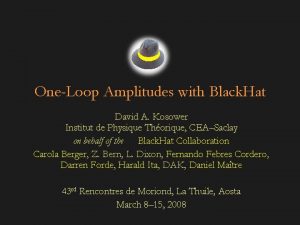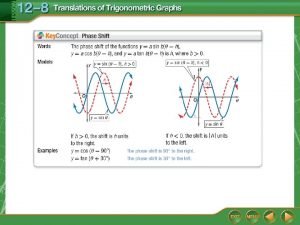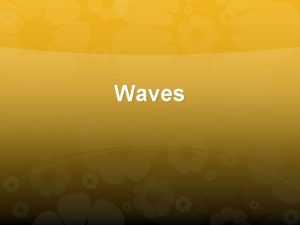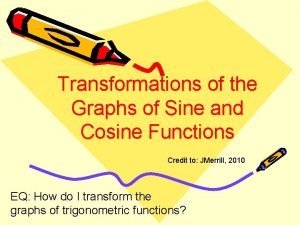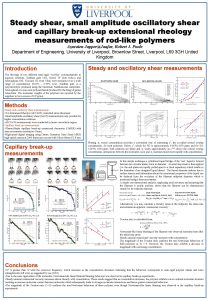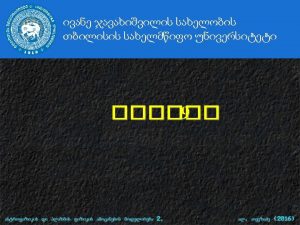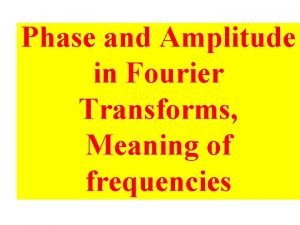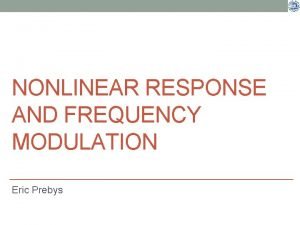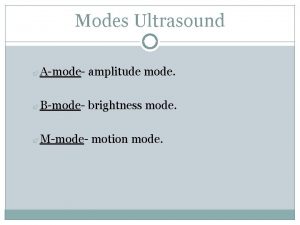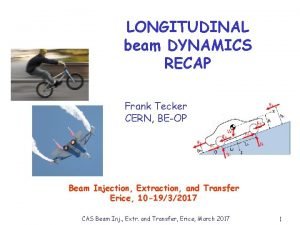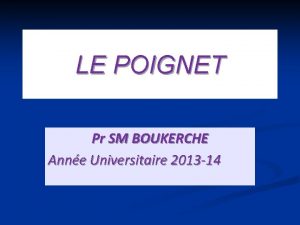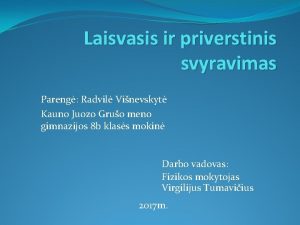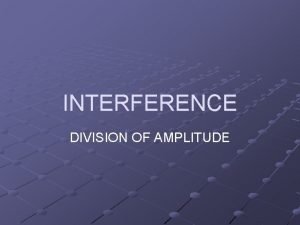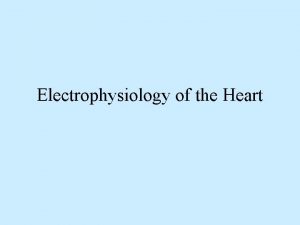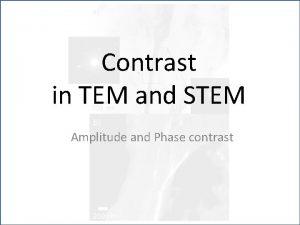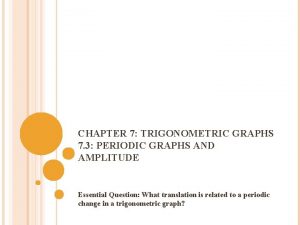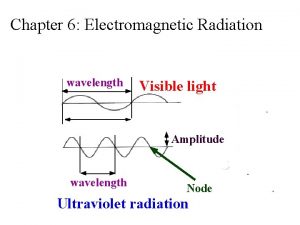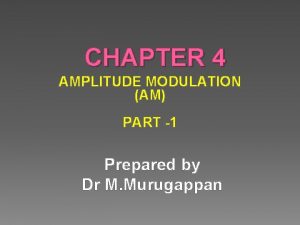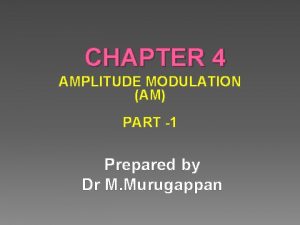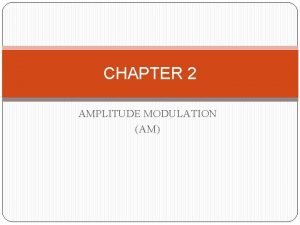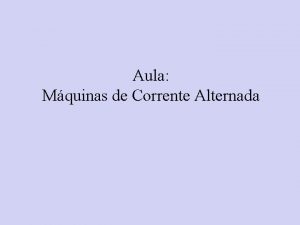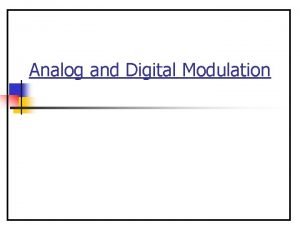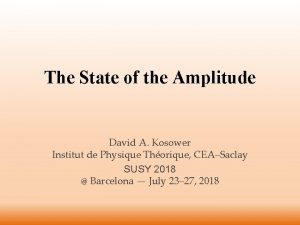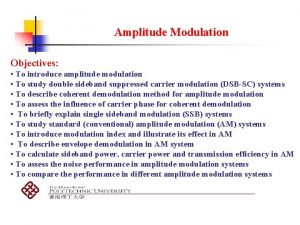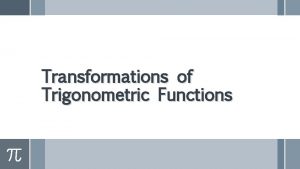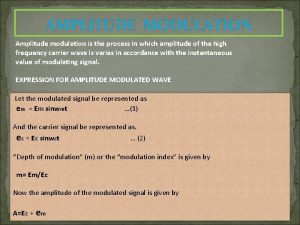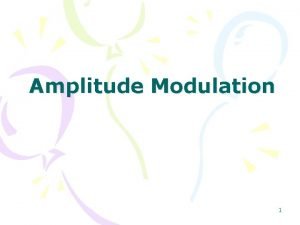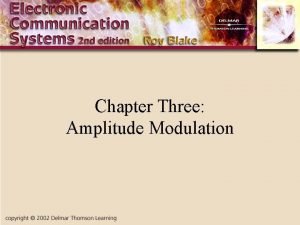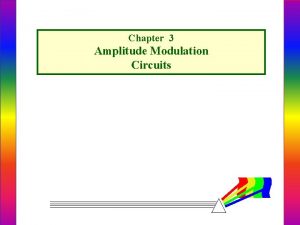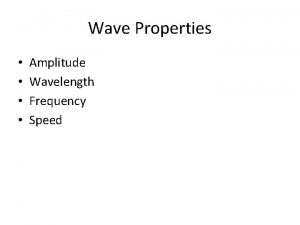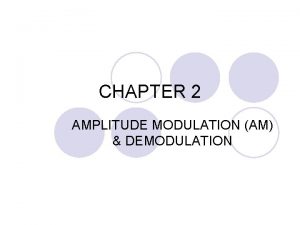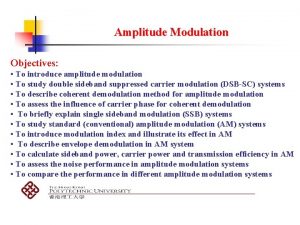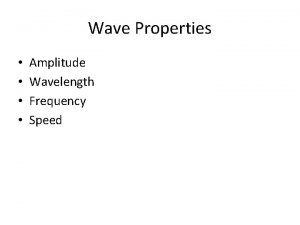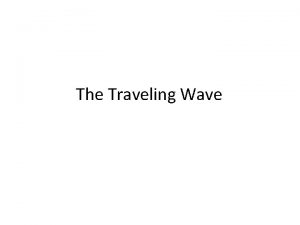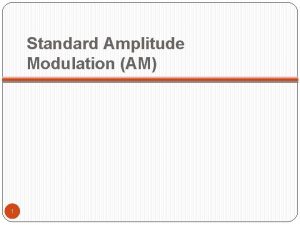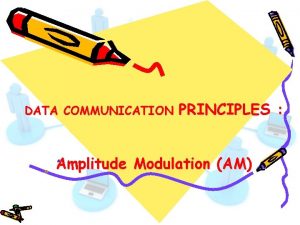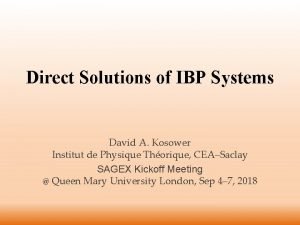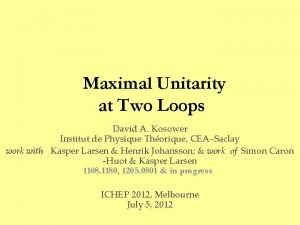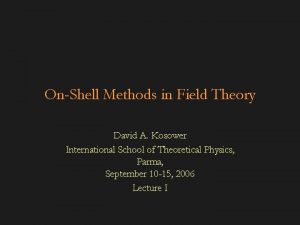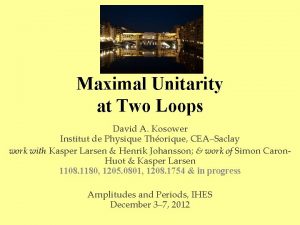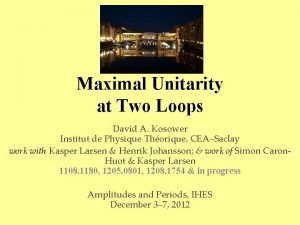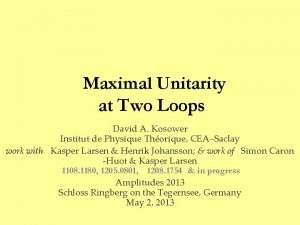The State of the Amplitude David A Kosower




























- Slides: 28

The State of the Amplitude David A. Kosower Institut de Physique Théorique, CEA–Saclay Pascos 2014 Warsaw, Poland June 23– 27, 2014

Amplitudes • Scattering matrix elements: basic quantities in field theory • Basic building blocks for computing scattering cross sections • Using crossing MHV • Primary interest: in gauge theories; can derive all other physical quantities (e. g. anomalous dimensions) from them • In gravity, they are the only physical observables

Traditional Approach • Feynman Diagrams – – – Widely used for over 60 years Heuristic pictures Introduces idea of virtual or unphysical intermediate states Precise rules for calculating amplitudes Classic successes: electron g-2 to 1 part in 1010; discovery of asymptotic freedom • How it works Pick a process Grab a graduate student Lock him or her in a room Provide a copy of the relevant Feynman rules, or at least of Peskin & Schroeder’s Quantum Field Theory book – Supply caffeine, a modicum of nourishment, and occasional instructions – Provide a computer, a copy of Mathematica, a copy of FORM & a C++ compiler – –

A Difficulty • Huge number of diagrams in calculations of interest — factorial growth with number of legs or loops • 2 → 6 jets: 34300 tree diagrams, ~ 2. 5 ∙ 107 terms ~2. 9 ∙ 106 1 -loop diagrams, ~ 1. 9 ∙ 1010 terms

• In gravity, it’s even worse

Results Are Simple! • Parke–Taylor formula for AMHV Parke & Taylor; Mangano, Parke, & Xu

Even Simpler in N=4 Supersymmetric Theory • Nair–Parke–Taylor form for MHV-class amplitudes

Answers Are Simple At Loop Level Too One-loop in N = 4: • All-n QCD amplitudes for MHV configuration on a few Phys Rev D pages

Calculation is a Mess • Diagram insides involve unphysical states • Each diagram does not respect symmetry of theory (“not gauge-invariant”) — huge cancellations of gaugenoninvariant, redundant, parts are to blame (exacerbated by algebra) • There is almost no information in any given diagram

On-Shell Methods • Use only information from physical states • Avoid size explosion of intermediate terms due to unphysical states • Use properties of amplitudes as calculational tools – Factorization → on-shell recursion (Britto, Cachazo, Feng, Witten, …) – Unitarity → unitarity method (Bern, Dixon, Dunbar, DAK, …) Known integral basis: – Underlying quantum in field theory integral basis Integrals expressible terms of logarithms, dilogarithms, rational functions of invariants • Formalism Unitarity On-shell Recursion; D-dimensional unitarity via ∫ mass

We can now calculate large classes of amplitudes in gauge theories Gauge Theoryto infinite numbers of legs Sometimes Amplitudes A wealth of data for further study A foundation for a new subfield Integrability String Theory


N = 4 super-Yang–Mills • Theoretical laboratory at weak coupling over the years – Particle content and Lagrangian more complicated than pure Yang–Mills: add 4 Majorana fermions and 3 complex scalars in the adjoint, with carefully-tuned Yukawa and four-scalar interactions – Amplitudes are much simpler, because theory has a much larger symmetry – Connection to strong coupling via Ad. S/CFT • Superconformal symmetry • A new symmetry, not seen in the Lagrangian, was discovered a few years ago • Dual Conformal Symmetry

Dual Coordinates • x 1 k 5 x 5 k 4 x 2 x 4 k 2 x 3 k 3

Dual Conformal Invariance •

Amplitudes to All Orders BDS exponentiation conjecture for planar MHV amplitudes Anastasiou, Bern, Dixon, DAK; Bern, Dixon, & Smirnov Exponentiated structure holds for singular terms in all gauge theories — in N = 4 super-Yang–Mills the conjecture is for finite terms too True for n=4, 5 Thanks to dual conformal invariance


Higher-Loop Feynman Integrals • Basic ingredient for scattering amplitudes in more general theories • At one loop, Feynman integrals are expressible in terms of logarithms and dilogarithms • Trace back to computations of double boxes by Smirnov and Tausk in late 1990 s • At higher loops, we need a more general class of iterated -integral functions called Goncharov polylogs

• Sophisticated mathematical tools applied over the years • Several methods of attack • Dramatic advances in the last year in the differential equations approach Henn; Caola, Henn, Melnikov, Smirnov & Smirnov – Choose basis of Feynman integrals [using integration-by-parts identities (Chetyrkin & Tkachov; Laporta)] – Basis integrals satisfy coupled differential equations – Very typically evaluate to iterated integrals • Choose basis functions to be of uniform trans* weight, so that the differential equations are simple, and the iterated representation is manifest


Higher Loops for the LHC • At one loop, – Integral reduction long understood (Brown & Feynman; Passarino & Veltman) – Apply generalized unitarity to computing amplitudes: put internal lines on shell, either at integrand level (Ossola, Papadopoulos, Pittau), or in solving for coefficients of integrals (“integral level”) (Bern, Dixon, Dunbar, DAK; Britto, Cachazo, Feng) – Solutions to on-shell conditions are in general complex

• At higher loops, – One encounters irreducible numerators – Need to add integration-by-parts identities (Chetyrkin & Tkachov; Laporta) to the reduction toolkit – Need more sophisticated tools from computational algebraic geometry: Gröbner bases; primary ideals; algebraic varieties – Need notions from multivariate complex analysis: global poles; multivariate contour integration Badger, Frellesvig, & Zhang; Huang, Søgaard, & Zhang Caron-Huot, DAK, Larsen, Johansson, Søgaard Mastrolia, Mirabella, Ossola, Peraro • First explicit calculations A 5(1+, 2+, 3+, 4+, 5+) Badger, Frellesvig, & Zhang • Understanding the ABDK/BDS relation at the level of cuts Caron-Huot, DAK, Larsen, Johansson, Søgaard

Supergravity • For many years, people believed that all supergravity theories were UV divergent • Belief was based on an inability to rule out counterterms • The original papers (Howe, Stelle) were careful, but many people weren’t: Þ counterterms there with non-vanishing coefficient, at three loops Þ supergravity diverges Þ only string theory remains as a candidate theory of gravity • Pure Einstein gravity known to diverge at two loops • Until recently, no other explicit divergence has been seen in any pure supergravity theory

• Explicit calculation shows that N=8 supergravity is finite through four loops Bern, Carrasco, Dixon, Johansson, & Roiban • And further study that the lowest-order counterterm appears at seven loops Bossard, Howe, Stelle; Elvang, Freedman, Kiermaier; Green, Russo, Vanhove; Green and Bjornsson ; Bossard , Hillmann & Nicolai; Ramond & Kallosh; Broedel & Dixon; Elvang & Kiermaier; Beisert, Elvang, Freedman, Kiermaier, Morales, Stieberger What about lower supergravities?

• Calculate UV divergences in amplitudes • Generalized unitarity — break apart loops into trees • Gravity ≅ (Yang–Mills)2 – Kawai–Lewellen–Tye relation – Bern–Carrasco–Johansson representation • BCJ representation color factor kinematic numerator propagators where ni satisfy same Jacobi identities as ci

• Gravity amplitudes (or integrands) • N = 8 SUGRA ≅ N = 4 s. YM • Construction now understood for a wide variety of supergavity theories, with and without matter Johansson; Roiban

• N = 4 SUGRA ≅ N = 4 s. YM N = 0 s. YM • At three loops, theory is finite! Bern, Davies, Dennen, & Huang • In spite of possible counterterm Bossard, Howe, Stelle; Bossard, Howe, Stelle, Vanhove • At four loops, a divergence appears Bern, Davies, Dennen, Smirnov • But may be specific to this theory because of an anomaly Carrasco, Kallosh Roiban, Tseytlin • Next target: N = 5 SUGRA ≅ N = 4 s. YM N = 1 s. YM

Summary • Explicit calculations of scattering amplitudes have led to – New insights – New techniques – Many new results in QCD, super-Yang Mills, and supergravity New Techniques Generalize Calculate New Insights Interpret New Results • We can look forward to more rapid progress in coming years
 David kosower
David kosower State the amplitude period and phase shift
State the amplitude period and phase shift Mechanical waves examples
Mechanical waves examples Amplitude wavelength and frequency
Amplitude wavelength and frequency Cosine wave
Cosine wave O que é o clima equatorial
O que é o clima equatorial Small amplitude oscillatory shear
Small amplitude oscillatory shear Small amplitude wave
Small amplitude wave Gmr head amplitude
Gmr head amplitude Ecological amplitude definition
Ecological amplitude definition Phase meaning
Phase meaning Amplitude modulation vs frequency modulation
Amplitude modulation vs frequency modulation Limitations of mti radar
Limitations of mti radar What is a-mode ultrasound used for
What is a-mode ultrasound used for Dynamics
Dynamics Flexion poignet amplitude
Flexion poignet amplitude Mechaninis svyravimas
Mechaninis svyravimas Interference by division of amplitude
Interference by division of amplitude Fine v fib
Fine v fib Graded oscillation technique
Graded oscillation technique Amplitude contrast
Amplitude contrast Amplitude trig
Amplitude trig Ultraviolet amplitude
Ultraviolet amplitude Unmodulated carrier amplitude formula
Unmodulated carrier amplitude formula Trapezoidal pattern am modulation
Trapezoidal pattern am modulation Principle of amplitude modulation
Principle of amplitude modulation Signal amplitude of eeg
Signal amplitude of eeg Tres correntes alternadas senoidais com mesma amplitude
Tres correntes alternadas senoidais com mesma amplitude Amplitude modulation vs frequency modulation
Amplitude modulation vs frequency modulation
